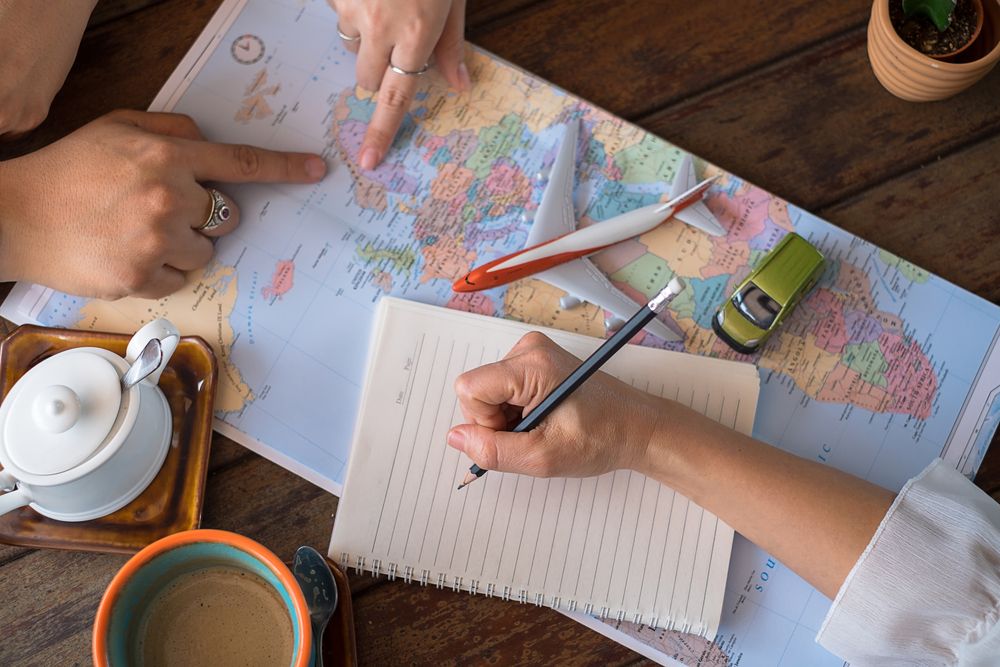Planning for a vacation can be an exciting experience, but without careful budgeting and saving, the cost of travel, accommodations, and activities can quickly add up. To enjoy your vacation without financial stress, it's important to save effectively and set realistic goals. Here’s a step-by-step guide to help you save for your next vacation:
1. Set a Realistic Vacation Budget
The first step in saving for a vacation is determining how much your trip will cost. Consider all the expenses, including airfare, accommodation, food, activities, transportation, and souvenirs. Make sure to account for unexpected costs, such as tips, baggage fees, or extra activities.
- Tip: Research the destination to get a better idea of average costs. Websites like TripAdvisor and travel blogs can give you an estimate of what you can expect to spend.
- Impact: A clear budget will help you avoid overspending and keep your savings goals realistic and achievable.
2. Set a Savings Goal and Timeline
Once you have a budget in mind, set a target for how much you need to save each month until your trip. Factor in how much time you have before your vacation and break down your total savings goal into smaller, manageable monthly amounts.
- Tip: If your vacation is a year away, aim to save a fixed amount each month. For shorter trips, calculate the total cost and determine how much you can realistically set aside each week or month.
- Impact: Setting a timeline and monthly savings goal makes the process less overwhelming and gives you a clear target to work towards.
3. Open a Dedicated Vacation Savings Account
One of the best ways to save for a vacation is to open a separate savings account dedicated to your trip. This prevents you from spending the money on other non-essential purchases and helps keep you on track with your goal.
- Tip: Look for a high-yield savings account to earn interest on your vacation fund. Many online banks offer better interest rates than traditional banks.
- Impact: A separate savings account ensures that your vacation fund stays intact and grows through interest, making it easier to track your progress.
4. Automate Your Savings
To make saving easier, set up automatic transfers from your checking account to your vacation savings account. By automating your savings, you’ll ensure that money is consistently set aside without having to think about it.
- Tip: Schedule the transfer right after you get paid to ensure that you're saving before you have a chance to spend the money on other things.
- Impact: Automating your savings helps you stay disciplined and ensures consistent contributions to your vacation fund.
5. Cut Back on Non-Essential Spending
Look for areas where you can reduce spending in order to increase your vacation savings. Cutting back on small luxuries, such as eating out, subscription services, or impulse purchases, can add up over time.
- Tip: Identify your biggest non-essential expenses, like takeout, entertainment, or shopping for clothes, and set a goal to reduce or eliminate those costs temporarily.
- Impact: Cutting back on unnecessary spending frees up more money for your vacation fund, allowing you to save more each month without feeling deprived.

6. Take Advantage of Cash Back and Rewards
If you use a credit card with cash back or rewards points, consider putting those rewards toward your vacation expenses. Many cards offer bonus points or cashback on travel-related purchases, which can help reduce the overall cost of your trip.
- Tip: Use your rewards card for everyday purchases and travel expenses to accumulate points. Some cards also offer sign-up bonuses that can be used for travel.
- Impact: Cash back or rewards points can help offset travel costs like flights, accommodations, or meals, making your vacation more affordable.
7. Look for Discounts and Deals
Finding discounts and deals on flights, hotels, and activities can save you a significant amount of money. Use websites and apps that specialize in finding the best travel deals, such as Kayak, Skyscanner, and Groupon.
- Tip: Sign up for deal alerts and newsletters from travel websites or apps. Many offer limited-time promotions and discounts, especially during off-peak seasons.
- Impact: Taking advantage of discounts and promotions can reduce the overall cost of your trip, allowing you to save more in your vacation fund.
8. Sell Unused Items
Decluttering your home and selling items you no longer need can be an effective way to raise extra funds for your vacation. Consider selling things like old electronics, clothing, or furniture through platforms like eBay, Facebook Marketplace, or Poshmark.
- Tip: Use the proceeds from your sales to make a lump-sum deposit into your vacation savings account to give your fund a boost.
- Impact: Selling unused items can help you reach your savings goal faster and declutter your living space in the process.
9. Earn Extra Income
If your regular savings plan isn’t enough to reach your goal in time, consider finding ways to earn extra income. This could be through freelance work, a part-time job, or gig work like dog walking, babysitting, or driving for rideshare services.
- Tip: Look for side jobs that align with your skills or interests, and direct any extra earnings toward your vacation savings.
- Impact: Earning extra income can help you meet your savings target faster, enabling you to take your vacation without sacrificing your regular financial commitments.
10. Cut Back on Luxury Purchases
Vacation savings don’t always need to come from cutting back on essentials—sometimes cutting back on luxury or "treat yourself" purchases can help. Consider temporarily reducing how often you splurge on non-essential items, such as designer clothes, gadgets, or premium coffees.
- Tip: Try a "spending freeze" for a month or limit your luxury spending to a set amount, redirecting the savings into your vacation fund.
- Impact: Cutting back on luxury purchases helps you focus on your goal and can make a big difference in how quickly you build up your vacation fund.
Saving for a vacation doesn’t have to be overwhelming or stressful. By setting a realistic budget, automating your savings, cutting back on unnecessary expenses, and taking advantage of rewards and discounts, you can build your vacation fund in a way that fits your lifestyle. Whether you’re planning a weekend getaway or a luxurious international trip, these tips will help you save money and enjoy your dream vacation without breaking the bank.


